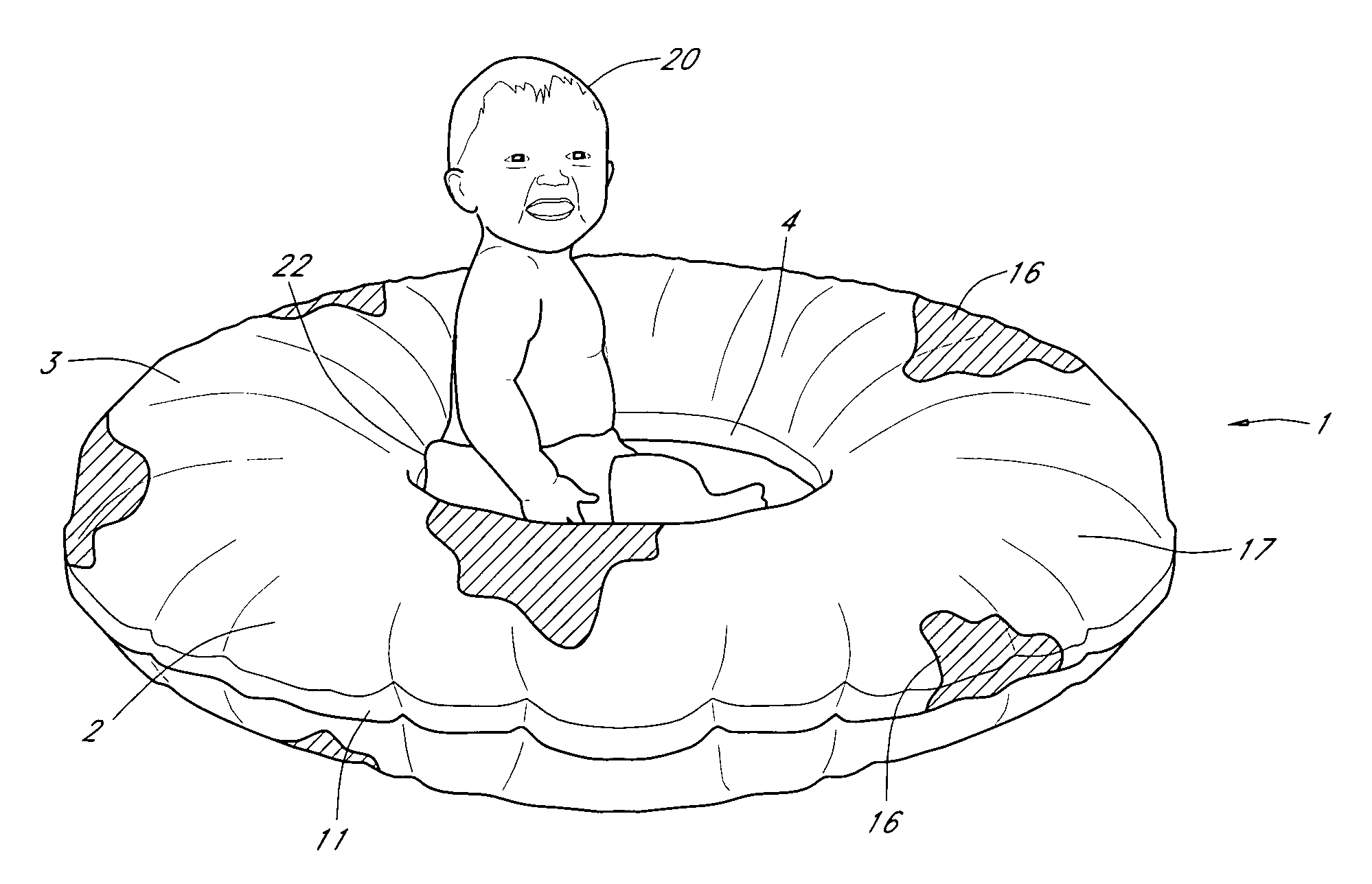Infant support and development pillow
a technology for supporting and supporting the infant, which is applied in the field of infant sitting support devices, can solve the problems of infant falling, infant's lower back muscles are not strong enough for independent support, and infants are prone to falling, so as to promote the development of the muscles in the lower back and promote the development of the infant's cognitive facilities
- Summary
- Abstract
- Description
- Claims
- Application Information
AI Technical Summary
Benefits of technology
Problems solved by technology
Method used
Image
Examples
Embodiment Construction
—ELEMENT LISTING
[0032]
Element No.Description1Infant support and development pillow2Circular support cushion3Removable cushion cover4Central opening5Padded seat6Lower inner sidewalls of inner seat area7Upper inner sidewalls of inner seat area8Lower outside of circular support cushion9Upper outside of circular support cushion10Lower seating flap11Circumferential outer seam12Circumferential inner seam13Lower seating flap opening14Seating pad15Detachable securement means16Contrast area - dark17Contrast area - light18Lower seating flap zipper19Support gap20Infant21Infant posterior22Infant lower spinal area (back)23Substantially vertical inner surface24Pattern shape for the top portion of cover25Pattern shape for the bottom portion of cover26Pattern shape for the lower seating flap27Pattern for circumferential inner seam28Pattern for circumferential outer seam
DETAILED DESCRIPTION
[0033]FIG. 1 illustrates a perspective view of the infant support and development device 1 of the preferred em...
PUM
 Login to View More
Login to View More Abstract
Description
Claims
Application Information
 Login to View More
Login to View More - R&D
- Intellectual Property
- Life Sciences
- Materials
- Tech Scout
- Unparalleled Data Quality
- Higher Quality Content
- 60% Fewer Hallucinations
Browse by: Latest US Patents, China's latest patents, Technical Efficacy Thesaurus, Application Domain, Technology Topic, Popular Technical Reports.
© 2025 PatSnap. All rights reserved.Legal|Privacy policy|Modern Slavery Act Transparency Statement|Sitemap|About US| Contact US: help@patsnap.com



